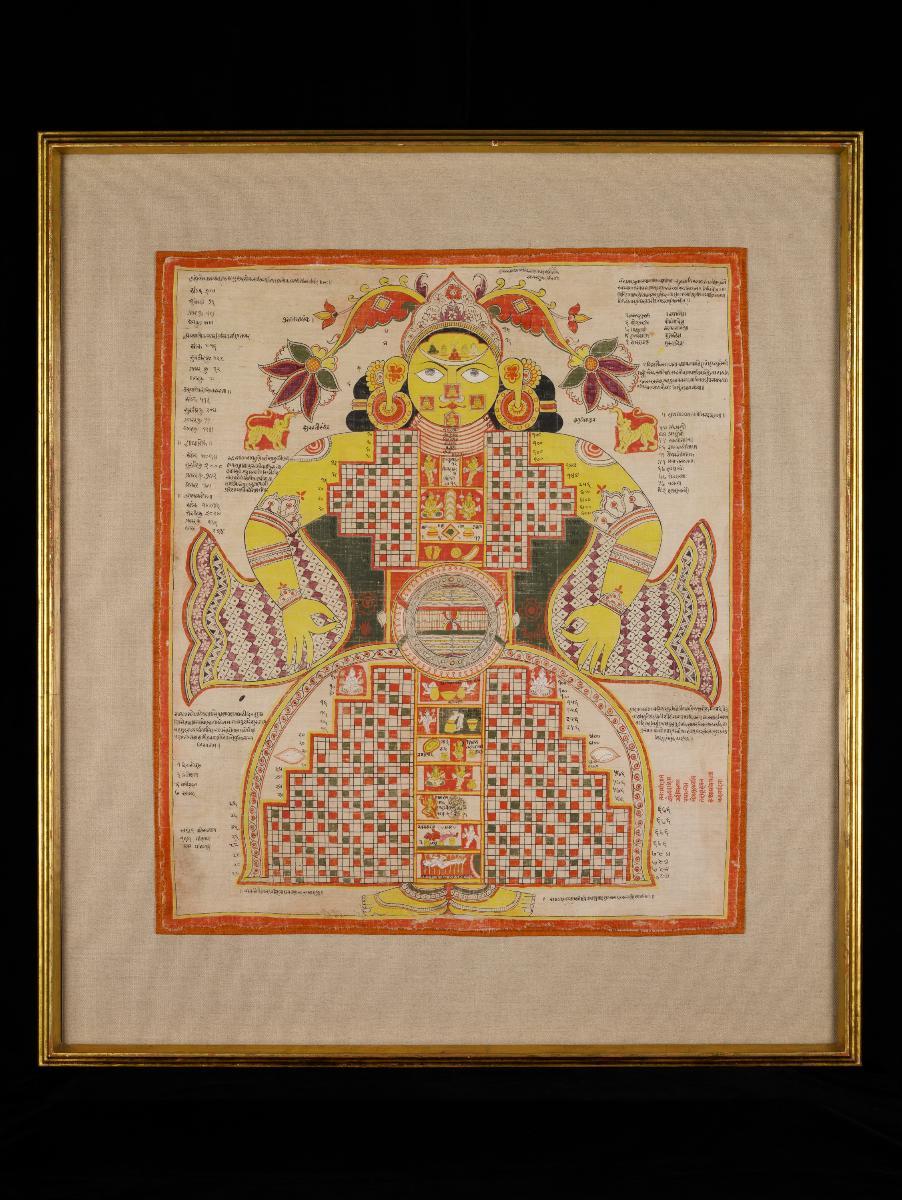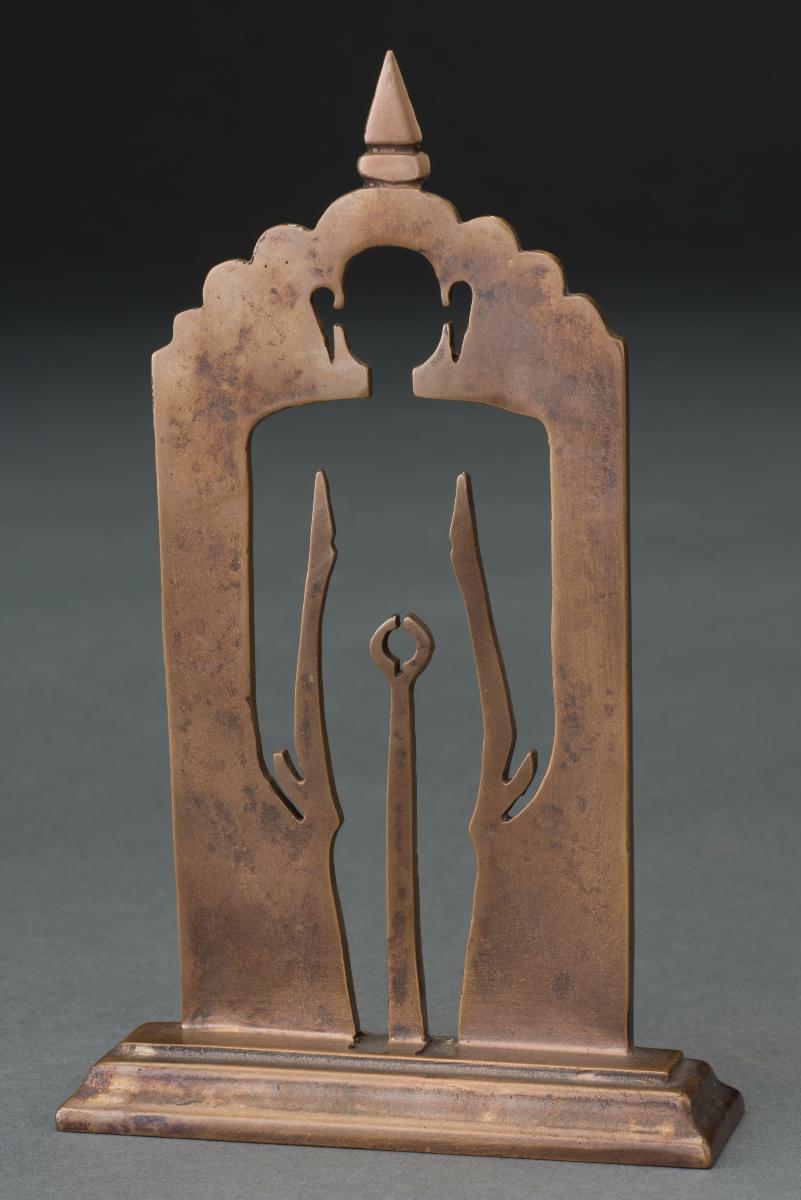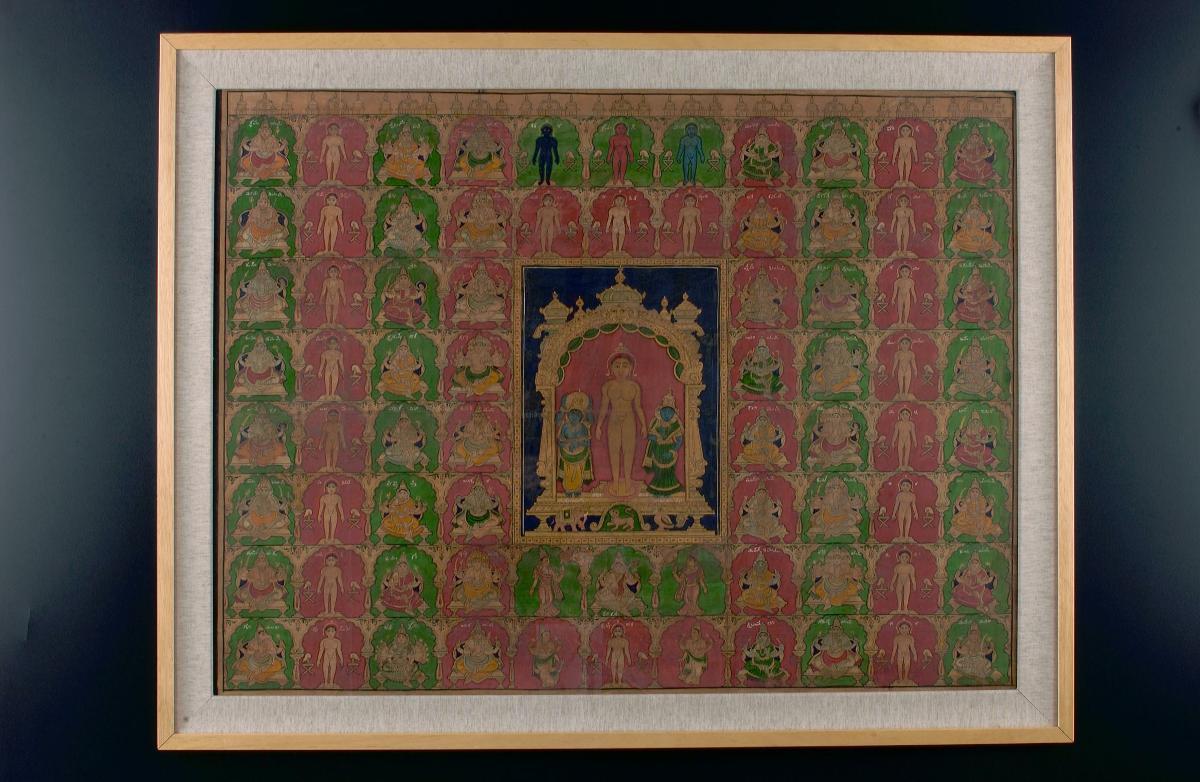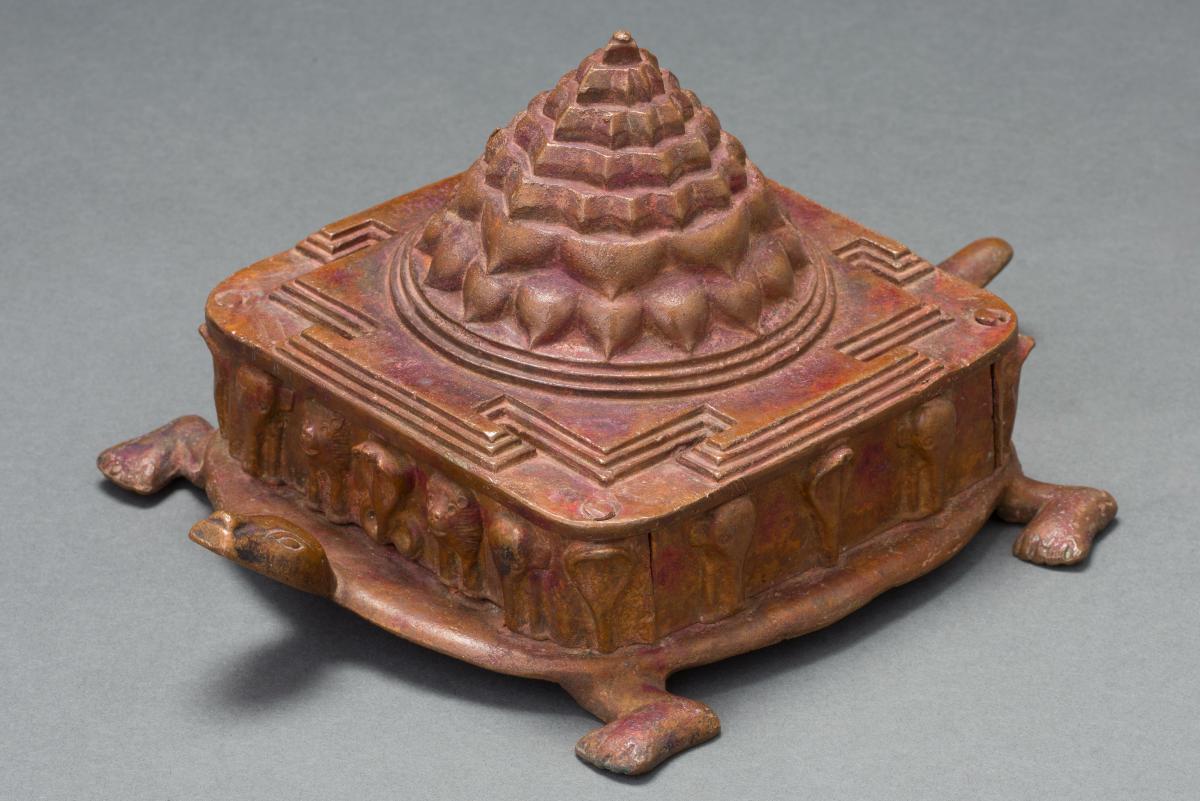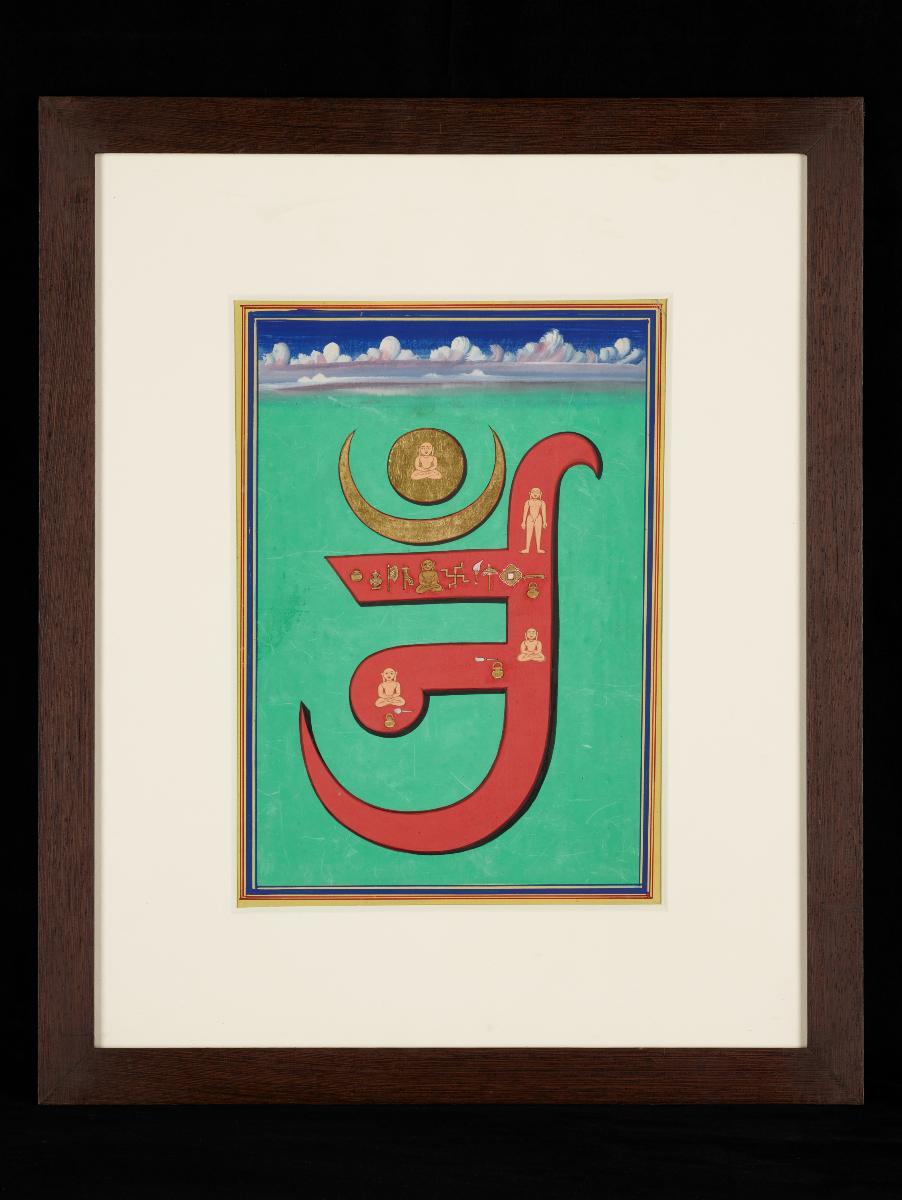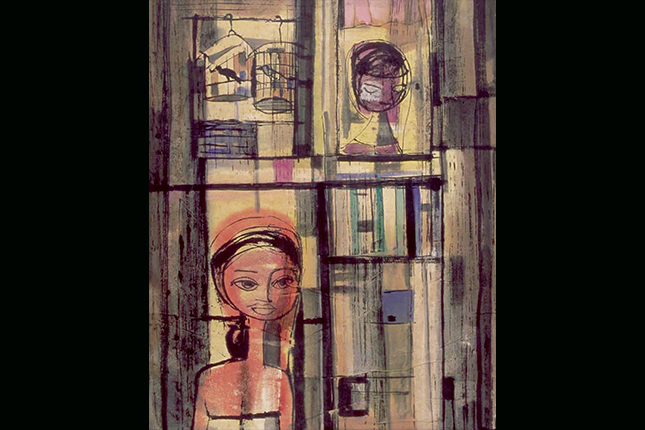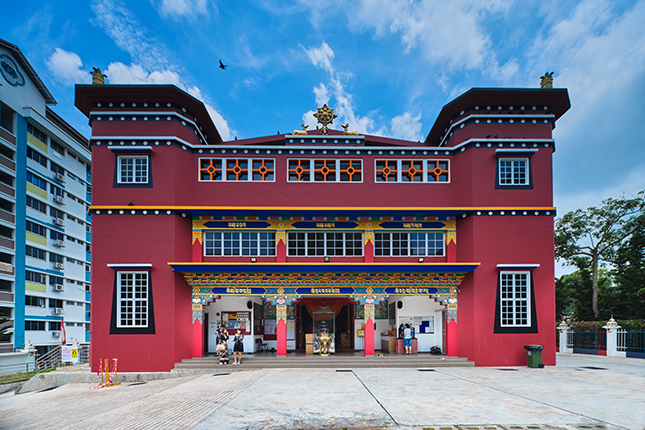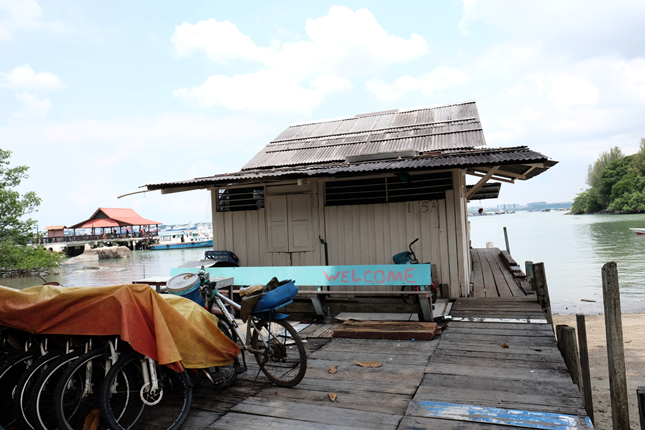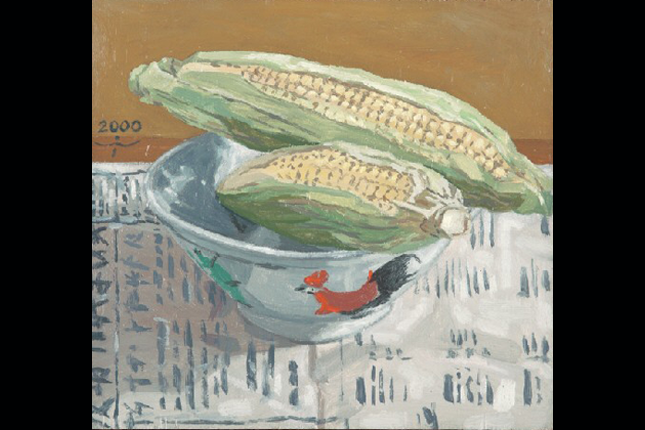Image size: 89.4 x 77.5 cm
This 18th century painting of a purushkara (“of human form or effort”) yantra from either Rajasthan or Gujarat in India is an example of a Jain cosmographical pata (“cloth painting”). Also known as a lokapurusha (“cosmic being”), this anthropomorphic representation of the cosmos according to the Jain faith sees the universe divided into three main segments, namely the urdhvaloka (“upper world”), madhyaloka (“middle world”), and the adholoka (“the lower world”). Urdhvaloka here is represented by the segment above the waist, where the different realms of the heavenly beings are represented. Notably, the dwellings of the anuttara and siddhas are represented on the face of the lokapurushka, where the siddhas rest above the siddhasila (represented by the crescent) on the forehead. Madhyaloka, the realm where humans and other sentient beings dwell, is represented by the map of Jambudvipa on the waist, where oceans, rivers, mountains, and landmasses surround Mount Meru and the jambu (“woodapple”) tree. Adholoka is represented by the segment below the waist, where the seven levels of naraka (“hell”) are depicted. Of these three worlds, the madhyaloka is considered to be of greatest importance as it is the site where Jinas are born, and also where liberation (moksha) from the cycles of rebirth can take place. As a yantra, this pata would have been used as an aid for meditation or prayer, and to help worshippers consider the parallels between the microcosm of the body and the macrocosm of the universe.




